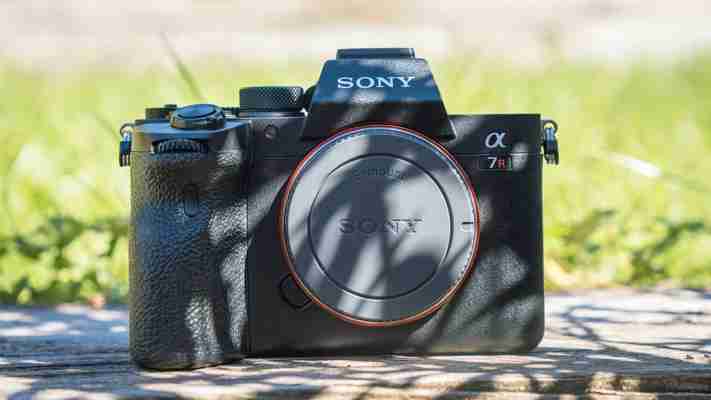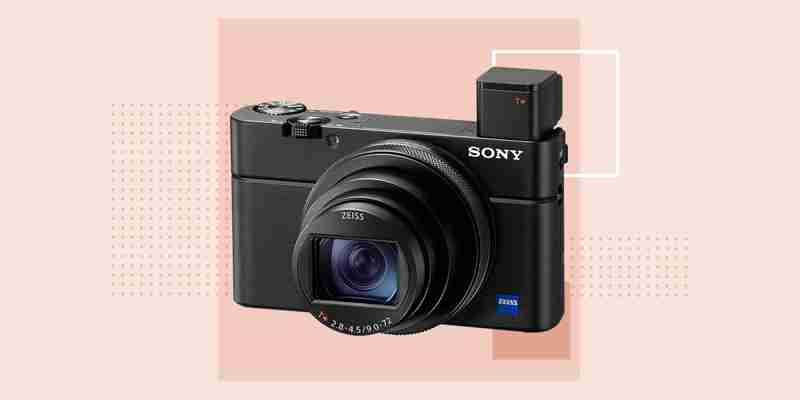Camera News: Sony on top in latest mirrorless camera market share report
Some interesting news out of the world of mirrorless cameras.

Sony has overtaken Canon in the mirrorless camera market.
In the Japanese market.
And that, to me at least, would seem like a pretty big deal especially given how many new mirrorless camera models Canon has introduced over the past few years — several even priced and positioned in the entry (Canon EOS RP) and mid (Canon EOS R6) markets.
The data comes way of BCNretail which notes that in July of 2022 Sony overtook Canon to become the top seller of mirrorless cameras in Japan. OM Digital (Olympus) places third:
In the first week of July 2022 (July 4, 2022-July 10, 2022), Sony overtook Canon for the first time in 35 weeks in the market share of sales by manufacturer in the mirrorless interchangeable-lens camera market. It was revealed in the “BCN Ranking”, which aggregates the actual sales data of consumer electronics retailers and online shops.
Surprisingly, Sony hasn’t introduced a new mirrorless camera in a while. I believe the last new model was the (excellent) 61MP beast that is the full-frame Sony a7R IV ($3,498 USD).
However…
I would take this data and news with a large grain of salt.
As commenters point out on Sony Alpha Rumors:
This report is just one data point;
This represents just the Japanese market (and obviously not the global market);
And this isn’t indicative of a trend, at least not yet.
Still, so far as I can tell the data from BCNretail does seem accurate for Japan and would indicate some (inexplicable) momentum for Sony.
Covid has disrupted many markets and businesses so it could very well be another example of supply chains gone mad. Who knows really.
I think the bigger news is that the smartphone camera continues to eat away at traditional camera share. The Apple iPhone being the key player in this new race. Computational photography is a trend not to be taken lightly. Software can do a lot of the heavy lifting when it comes to image processing. And I still believe this is an area where companies like Canon, Sony, Olympus, Fuji and Nikon will need to improve.
As always these are just tools. It wouldn’t matter what camera brand you use on your project if you don’t have all the other stuff lined up, like good lighting, acting, blocking, etc. Oh: and a good story!
I just watched maestro Guillermo del Toro’s impressive directorial debut film Cronos (1993). Quite a hoot, and ever creative — definitely portends a future filmmaking legend. As for what camera was used by the cinematographer to shoot it? I have no idea.
Sony A7R IV mirrorless camera review
Despite the big price tag, this is an incredible camera in a class of its own. For landscape photographers, studio portraits, or professional wedding photography, the Sony A7R IV is the camera to beat right now.

Why you can trust Space Our expert reviewers spend hours testing and comparing products and services so you can choose the best for you. Find out more about how we test .
The Sony A7R IV was released back in 2019, only two years after the A7R III. On the surface, it looks pretty similar to the A7R III, but Sony has made subtle changes to its design and performance which make the world of difference in practice, making it an absolute dream to handle. This camera has a world-leading auto focus system, incredible image quality and better weather sealing than previous models.
Sony A7R IV: Key Specs Sensor: Full-frame
Mount: Sony E
Resolution: 61.0 Megapixel
ISO Sensitivity: 100-32,000 (expanded 50-102,400)
Continuous Shooting: up to 10FPS with AF/AE tracking
Weight: 665g
The Sony A7R IV is also currently the highest resolution full-frame camera on the market, so there's no question why professional photographers are flocking to buy this powerhouse of a camera.
Sony A7R IV at Crutchfield for $2,998 (opens in new tab)
The A7R IV comes with a pretty hefty price tag ($2998), so we'll be taking an in-depth look into this camera and discussing which types of photography it would be best suited for, and all the pros and cons of this camera and the features it offers.
Sony A7R IV: Design
A rear view of the Sony A7R IV shows the large LCD screen and camera controls. (Image credit: Kimberley Lane)
Improved grip feels better in the hand
Great lightweight size for a full-frame camera
Bigger and better buttons than predecessor
The Sony A7R IV seems to perfectly balance the portability of a mirrorless camera while still being a big enough size to make it easy to grip. This camera weighs 665g with dimensions of approximately 128.9mm x 96.4mm x 77.5mm. The grip is one of the aspects of the camera which has been improved after criticism of the A7R III, with many users commenting that there wasn't enough room between the lens and the grip. Sony has now redesigned the grip to leave more space in between the grip and the lens, making you less likely to drop it.
Sony has also redesigned the buttons on the camera body to be bigger and better and the previous model. It's now much more obvious when you've pressed them which may not sound like a very important issue in theory, but in practice, it's advantageous for astrophotographers who are more likely to be wearing gloves while out on a shoot. The AF joystick is also larger and better, although the Auto-Focus on this camera is so good you likely won't even need to use it.
Sony A7R IV: Performance
The Sony A7R IV gives great astrophotography with fantastic detail even in the darkest shadows. (Image credit: Kimberley Lane)
Up to 10 continuous frames per second shooting
Excellent eye AF and tracking
Incredible image quality
The Sony A7R IV can shoot up to 10 continuous frames per second, which is impressive for a 61-megapixel full-frame camera with such large files. However, you run into problems when you're shooting on drive mode as there seems to be quite a slow buffer time. We tested this camera on a portrait shoot, and we got to around 60 shots in the buffer before the camera would struggle to take any more images, and we had to wait a while for the buffer to clear. You would need to time your burst shots well to avoid the buffer filling up too quickly, but the A7R IV's ability to accurately lock onto moving subjects is incredible so you won't miss many shots.
We used a 120MB/s memory card in the camera, and with the file sizes being roughly around 120MB with no option for a medium or small RAW file, this meant it could take around a whole minute before we could continue shooting again. You can help speed things up more by using an even faster memory card, but as the file sizes are so big it's still not going to be particularly fast at writing the images to the card. If you predominantly shoot sports or action photography, this probably isn't the camera for you.
The camera doesn't struggle with bright highlights or dark shadows, even when shooting directly into the sun. (Image credit: Kimberley Lane)
If you don't need images with 61MP, with the touch of a button you actually can transform the A7R IV into a 26MP APSC camera with a 1.5x crop factor. This means you can capture 10FPS bursts for much longer with less of a buffer, making it much more useful for shooting sports or fast action. Not to mention you can also use any APSC lenses you may already own.
Where this camera comes into its own, though, is the incredible Sony autofocus system. Sony has introduced what they call 'real-time tracking', which means the camera has been trained to recognize eyes and faces. This camera has fast hybrid autofocus with 567 point focal plane phase-detection AF (425 on the A7RIII) and 425 point contrast-detection AF — vastly improved from the previous model. In action, the autofocus on this camera was near faultless and followed the subject perfectly keeping their eyes constantly in focus.
It could also recognize when the subject was wearing sunglasses, switching between face tracking and back to eye tracking when their eyes weren't covered. Even when the subject turned their face away from the camera, it recognized straight away when they had turned back to face the camera again and followed them effortlessly around the frame. We also tested this camera on a couple of camera-shy black cats, and where many cameras wouldn't even recognize that there's a face in the frame, it tracked their eyes flawlessly. The real-time animal eye tracking on this camera is a huge advantage, as let's be honest, animals are a lot less cooperative than humans are.
Ideal even for portraits with excellent color reproduction in subtle tones. (Image credit: Kimberley Lane)
The real selling point of this camera is the incredible image quality. The Sony A7R IV is the highest resolution full frame camera you can buy with 61MP and a 4K max video resolution. When it comes to image quality, this camera is in a class all by itself.
When it comes to battery life, we think the A7R IV faired very well. It uses the same FP-Z100 battery as the Mark III, and Sony claim that it can achieve 670 shots with the rear screen and 530 shots using the viewfinder (but this usually varies depending on your shooting style). However when we tested this camera in the real world, it performed very very well. Over the duration of a 2 hour shoot, we took over 2000 shots and by the end of the shoot the battery was only down to 65%, having started on a full charge.
Sony A7R IV: Functionality
A 61MP image sensor makes brilliantly detailed full-frame stills photographs. (Image credit: Kimberley Lane)
Many customisable options
Nonarticulated screen makes some shooting angles difficult
Good in low light
In total there are 11 customizable buttons on the A7R IV. There are up to 100 different assignable options for these buttons, split up into up to 27 categories. You can also save your custom settings to an SD card, and you can set up a custom 'my menu' tab consisting of your most used settings, so you'd be better off setting this up as you like and largely be able to stay out of the confusing menu system - a common gripe for many Sony users.
Although the 7.5cm LCD screen on this camera is very impressive in terms of quality, the screen's one downside is that it's not fully articulating. This makes shooting from lower angles more difficult, particularly if you're shooting in portrait orientation, and means it's not the best camera to choose if you're more of a vlogger or videographer. The screen is touch responsive, but the only thing you can really do with it is adjust focus.
The A7R IV also does very well in low light, making it a great option for astrophotography. You can use shots straight out of the camera at speeds of up to ISO 6400 (you'll start to see noise beyond that, though). The results are so good from just one shot that this camera would suit astrophotographers of any skill level.
Should I buy the Sony A7R IV mirrorless camera?
As this camera is still holding its own two years on from its release, we'd definitely recommend this camera if you are a professional photographer and have the budget for it. Although the competition has really stepped up since this camera was released, it's still one of the best cameras you can buy. The only type of photography that wouldn't be suited to this camera would be for action or sports photography, as it simply wouldn't be able to operate fast enough with its current buffer speed when shooting at full resolution, instead requiring photographers to drop down for faster shooting speeds.
If this product isn't for you
If the Sony A7R IV doesn’t seem like the right fit for you, there are many other options available that may be better suited. Unless you're shooting content for billboards or creating very large prints, it’s unlikely you’ll actually need to shoot 61MP, so here are a few other options to consider.
If you want to stick to Sony, the Sony A7 IV has many of the same features as the A7R IV, just with a lower resolution and a lower price tag. Even the model before that, the Sony A7 III, is still a cult favorite among many photographers. So unless you absolutely needed over 50MP then either of these two options would be a great purchase. For Canon users, the Canon EOS R5 (opens in new tab) actually beats the A7R IV in a few areas, including better IBIS, hardware, and slightly faster frame rates. The Canon R5 is also more ideally suited for those who shoot more video as well as photography. For Nikon shooters, the Nikon Z7 II (opens in new tab) would be the camera that most closely rivals the Sony A7R IV.
7 Best Sony Cameras to Buy in 2021
Sony is one of today’s leading camera makers and has been for quite some time now. Its lineup spans from compact cameras that can snap significantly better photos than any smartphone out there, all the way to pro-grade mirrorless cameras that are worthy of a spot on the sidelines of a major sports event.

To determine today’s best Sony cameras worth your attention, we spent an entire week combing through the tech giant’s product lineup. We sifted through specs, expert reviews, and consumer feedback for products in various price points and form factors.
The Best Sony Cameras
Best Compact Superzoom:
Best Point-and-Shoot Camera:
Best Mirrorless Camera:
Best Superzoom:
Best Compact Mirrorless Camera:
Best for Vlogging:
Big Zoom for Less:
What to Consider
Choosing between a point-and-shoot or an interchangeable lens camera (ILC) is hands down the most important decision you need to make when shopping for your next Sony camera. The former will ensure that you can begin snapping photos and capturing video the moment you power it up, while an ILC Sony camera will require you to invest further in lenses. Regardless of the camera type you choose, you should know that the more you spend on one, the better its performance and available features will be.
Sensor size is also crucial — the bigger it is, the better your photos will be. For point-and-shoot offerings, we recommend that you opt for a product with a 1-inch sensor. Introduced alongside the first member of the legendary DSC-RX100 product family in 2012, the hardware feature can capture content whose quality will defy your camera’s portability.
On the other hand, mirrorless Sony cameras with swappable lenses are available with a full-frame or a smaller APS-C image sensor. Full-frame cameras are bulkier but significantly more capable so, unless you are hellbent on working with a compact ILC camera, go for the bigger sensor. The price points of such products often overlap (e.g., the cost of a feature-packed APS-C camera can be on par with an older full-frame product).
The availability and layout of a camera’s hardware controls are also important. If you’re a beginner who’s looking to learn more about the craft of photography, look for a Sony product with more elaborate hardware button controls. They’ll allow you to grow into them and give you greater control over the images you capture.
Connectivity features like Bluetooth and Wi-Fi connectivity for a seamless link between the camera and your phone are also important. Pro-grade Sony cameras also pack elaborate sets of wired inputs and outputs for connecting external displays and microphones, among many other accessories.
All of the Sony cameras we picked for this list will store your memories on an SD card. If you don’t have one already, budget accordingly — and be aware that high-resolution photos and 4K videos require ample storage space.
Now that you know the basics for shopping for a Sony camera take your photography to another level with one of these heavily researched picks.






Leave a Reply